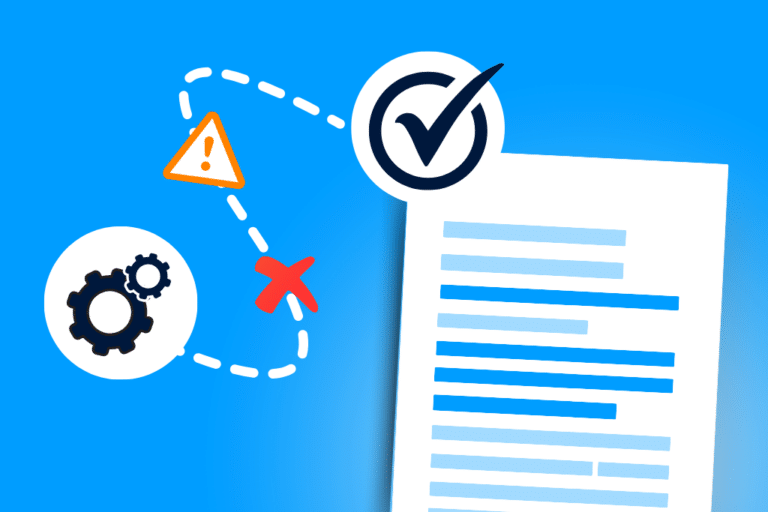Are you thinking of improving your contract management process?
At the heart of any commercial relationship between customers, suppliers or partners, contracts play a vital role in the life of a company. Good contract management is a strategic lever. And yet, in 2019, it was still estimated that more than half of companies did not have a contract monitoring tool, according to a study conducted by Deloitte.
To prevent these from becoming an obstacle to productivity, here are the 4 steps you need to take to optimize your company’s contract management.
How to simplify contract management?
Did you know that, on average, large companies have between 20,000 and 40,000 contracts? From drafting and signing them, to simply consulting them, managing them is therefore a crucial task to ensure their efficiency and smooth internal operation.
Efficient contract management saves time and helps control contract-related risks. Due dates, amounts, key dates, suppliers… dozens and dozens of essential and potentially risky data items are contained in contracts.
Good management therefore has a direct impact on a company’s health and profitability. Today, automated solutions are available to support professionals in managing contract life cycles, simplifying their creation and ensuring optimal, secure monitoring. These are known as digital contract management solutions.
1. Document your current process
Before opting for contract management software, it’s important to understand what works, and what doesn’t, in your company’s current contract life cycle. How do we proceed on the purchasing side? What about the legal department? Does the HR department have its own particular way of managing documents?
Start by reviewing all internal processes. This documentation phase helps you understand the needs and uses of all your teams.
It’s only once your employees’ habits and requirements have been audited that it’s possible to set objectives and find the CLM and associated functionalities that will suit all your teams.
Adopting contract management software means unifying contract management processes within your company, and improving the internal process from start to finish, whatever the department. This requires a roadmap to ease the transition.
By setting up documentation, you help your staff to identify the current status of a process, track its progress, set objectives and, above all, keep a record of it.
In the case of a new contractual policy, it enables users to be informed of the change and thus avoid information asymmetries.
📝 According to a Goldman Sachs study, implementing a contract policy can help:
- Speed up negotiation cycles by 50%.
- Reduce incorrect payments by 75-90%.
- Reduce contract management operating and processing costs by 10 to 30%.
👀 To read (and have your colleagues read): What are the major challenges in contract management?
2. Automate contract creation and tracking
Calling on a CLM means facilitating the contract process, from creation to signature, by automating all processes.
First and foremost, there’s the Legal Clausier. This allows you to collect in one place all the model clauses issued in your company’s contracts, like a huge data library.
These model clauses make it easier to create documents and ensure compliance. This not only ensures better risk management, but also frees up the time of legal departments to concentrate on higher value-added tasks.
This automation also applies to the review and modification of contracts. These are automatically recorded in a modification history.
In addition, contract tracking is also automated and put into a loop known as validation workflow. Thanks to this, all stakeholders are informed of the contract’s progress, and notified when they need to revise and/or sign it.
💡 Contracts that can be automated include framework agreements, service contracts and supplier contracts, as well as all related legal documents.
3. Build up your contractual database
Investing in a CLM also means creating a contractual database. It’s a library where all your contracts are stored, so there’s no more going back and forth from one filing cabinet to another, and no more lost contracts!
The use of a contract database generates both document management and operational benefits. These benefits include :
- ⏱️ Rapid contract review and validation: all your documents are just a click away.
- 🗃️ Reliable, secure archiving of your documents: they are safely filed in an encrypted database.
- 📋 Management of contractversions, revisions and annotations.
- 👥 User access management: you have full control over the solution’s users and their authorizations.
- 🏝️ Access to documents even when you’re on the move or telecommuting: since all contracts are filed in a secure library in the Cloud, you can retrieve them at any time, anywhere. No need to be in the office.
👉 For a company, digital contract management thus considerably promotes control over contractual commitments and improves operational efficiency yields.
4. Automate time-consuming tasks with artificial intelligence
Some contract management solutions, such as DiliTrust, are equipped with artificial intelligence to help you streamline time-consuming, non-value-added tasks such as entering, searching or filing information.
Artificial intelligence directly detects relevant information in contractual documents, such as clauses, key dates, amounts, durations, etc., and notifies you accordingly.
You won’t miss out on any information that could jeopardize the health of your business or the proper execution of a contract!
AI therefore removes the need for time-consuming research by legal and operational teams, especially as we always know where our documents are thanks to a CLM.
Good contract management streamlines collaboration between teams, ensures contract compliance and considerably reduces human error and unnecessary back-and-forth. Automating these tasks makes it easier to control risks and instantly improve performance.
Would you like to improve your company’s contract management?
Request a demo!


